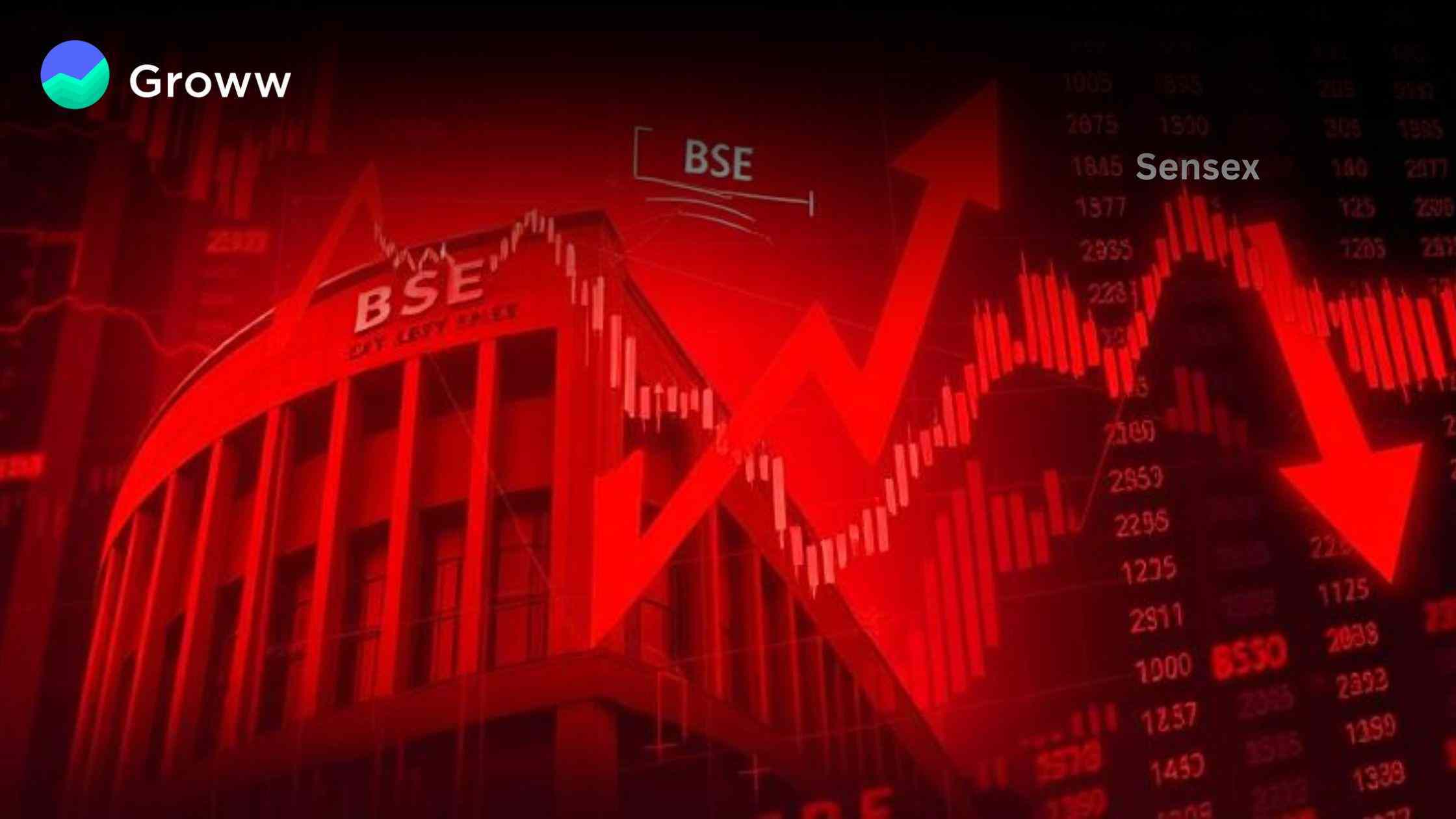Indian Stock Market Plummets Amidst Global and Domestic Pressures

The Indian stock market experienced a significant downturn, with the Sensex crashing 2,300 points in five days, down by 1.32%. This decline was influenced by a combination of global and domestic factors, creating selling pressure in the market. The Nifty 50 briefly hovered below the 23,000 level, down by 0.41 % before recovering. Investors have lost nearly ₹ 18 lakh crore in five days, marking a brutal week for them in the market.
Key Factors Behind the Market Downturn
Aggressive FPI Selling: Foreign Portfolio Investors (FPIs) have been selling Indian stocks since October, leading to significant outflows from the market. This selling is attributed to:
- Rising US Bond Yields: Increasing yields on US bonds make American assets more attractive compared to Indian equities. The rising yields are a result of the Federal Reserve's interest rate cuts.
- Stronger Dollar: A strong dollar further diminishes the appeal of investing in Indian markets.
- Fading Prospects of Fed Rate Cut: Expectations for the US Federal Reserve to cut interest rates have decreased, influencing FPIs to withdraw investments from India. The US Federal Reserve cut interest rates by 0.25% to 4.5%, coupled with a hawkish outlook on future rate adjustments.
Global Trade War Fears: Tensions arising from US President Donald Trump's tariff policies have heightened concerns about a global trade war. These issues also acted as a major contribution to the FPi withdrawal from India.
- Tariffs on Steel and Aluminum: Trump imposed a flat 25% tariff on steel and aluminium imports, which has affected countries like Canada, Brazil, Mexico, and South Korea. Unlike earlier, there are no country-specific exemptions.
- Impact on Emerging Markets: These tariffs could negatively affect emerging markets like India. Trump's tariff policies could hurt India by making exports costly, disrupting supply chains, triggering capital outflows, and weakening the rupee. A global slowdown may reduce trade demand, while retaliatory tariffs could escalate disputes. These factors may dampen India's economic growth, investor confidence, and export competitiveness.
- Retaliatory Measures: The European Union's potential retaliation with counter-tariffs adds to the uncertainty and increases the likelihood of a full-blown trade war. If the EU imposes tariffs in response to protectionist measures by another country (such as the U.S. or China), it could trigger a retaliatory cycle, leading to higher costs for businesses, disrupted supply chains, and slower economic growth.
- Uncertainty: Uncertainty over the US tariffs and their consequences for global economic growth has kept investors cautious about riskier equities.
Weak Q3 Earnings: The earnings reports for the December quarter (Q3) of India Inc. have not met expectations, raising concerns regarding their growth prospects. This, along with steep valuations, adds to the market jitters.
- Expectation vs. Reality: While Q3 earnings were marginally better than the previous two quarters, they were still disappointed compared to what valuations had indicated. Given the disappointing results, it is evident that the anticipated improvement in valuation has not occurred, yet it continues to remain unreasonably high.
- Sectoral Disappointments: Consumer staples, autos, and building materials have faced notable setbacks, with weak consumption trends adding to concerns. However, specialty chemicals appear to be on a path to recovery.
- Rupee Weakness: The depreciation of the Indian rupee against the US dollar has contributed to market anxiety and capital outflows
Valuation Concerns: Despite the recent market correction, there are still worries that the Indian stock market is overvalued. As of February 12, 2025, the ratio of India's total market capitalization to its Gross Domestic Product (GDP) stands at 114.46%, indicating a "modestly overvalued" status. This assessment is based on the Buffett Indicator, which compares market capitalization to GDP to gauge valuation levels.
- Small and Mid-Caps: Valuations for mid and small-cap stocks are considered particularly stretched. S. Naren has recently said that mid and small-cap stocks are now overvalued and called for a diversified asset allocation strategy to manage risks
- Unsustainable Valuations: Weaker quarterly earnings have made it difficult for the market to sustain high valuations.
- Expensive Market: According to Valuation guru Aswath Damodaran, the Indian stock market is the most expensive equity market in the world.
Disclaimer: This news is solely for educational purposes. The securities/investments quoted here are not recommendatory.
To read the RA disclaimer, please click here